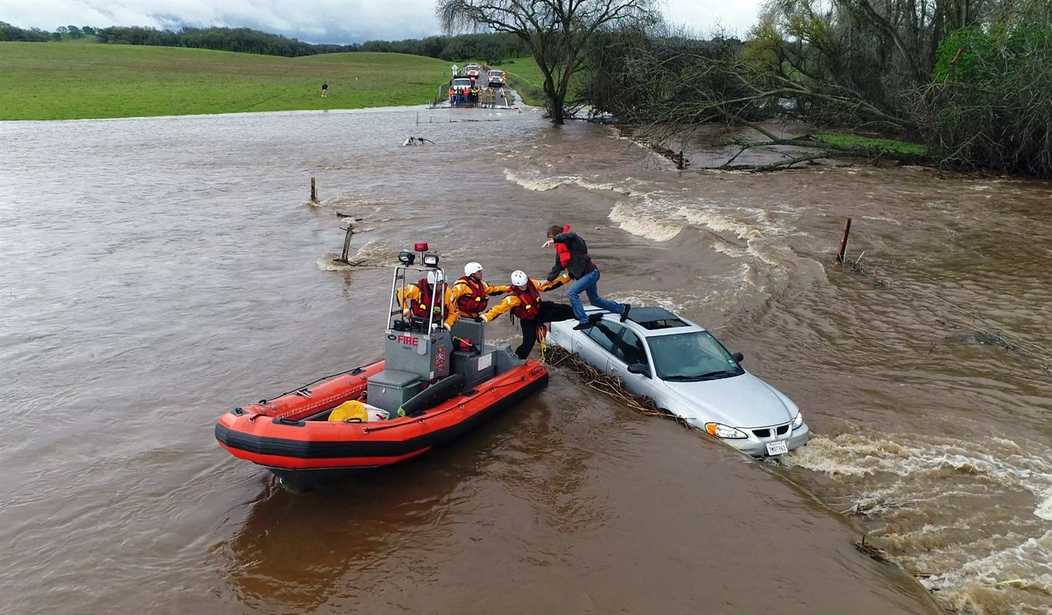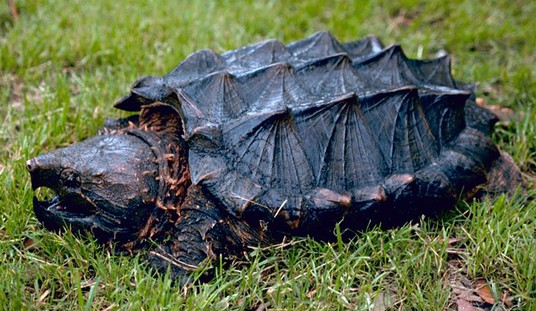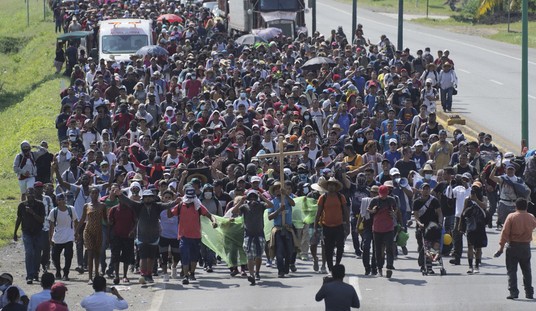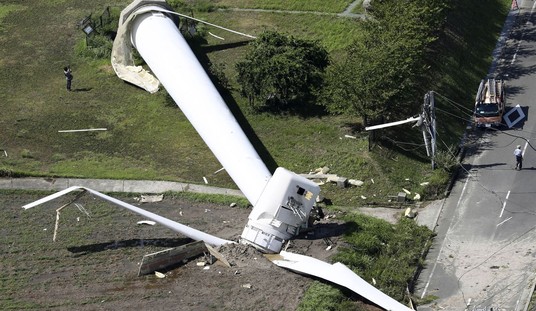Over the last several weeks, much of the nation’s media has been frothing at the mouth over the unprecedented, historic, incredibly dangerous storms that have drenched California. They threw out scary-sounding terms like “bomb cyclone,” blamed the evil “Pineapple Express” precipitation system and global warming, and in general acted as if something of this magnitude was unprecedented and unthinkable.
Turns out, not really.
Although the deluge caused serious destruction and loss of life, it actually wasn’t all that unusual and wasn’t caused by climate change. As I wrote at the time, weather happens. The Los Angeles Times surprisingly, admits this in Thursday’s edition:
Although scientists are still studying the size and severity of storms that killed 19 people and caused up to $1 billion in damage, initial assessments suggest the destruction had more to do with California’s historic drought-to-deluge cycles, mountainous topography and aging flood infrastructure than it did with climate-altering greenhouse gasses.
They were singing a different tune on January 11:
Officials say the storms highlight the way in which climate change is increasingly catching people off guard as the state swings from one extreme weather event to another.https://t.co/rosV9CEDqs
— Los Angeles Times (@latimes) January 12, 2023
But climate change is still the culprit, right? It must be; that’s what the New York Times told me. Actually, no, according to researchers:
Although the media and some officials were quick to link a series of powerful storms to climate change, researchers interviewed by The [Los Angeles] Times said they had yet to see evidence of that connection. Instead, the unexpected onslaught of rain and snow after three years of punishing drought appears akin to other major storms that have struck California every decade or more since experts began keeping records in the 1800s.
Oh. Don’t tell that to Governor Gavin Newsom, who would blame a 70-degree sunny day on climate change:
FACT CHECK: Gavin Newsom Says California's Rainstorms Are 'Proof That the Climate Crisis Is Real' – Washington Free Beacon https://t.co/SmrFZo31Ze
— Mike Netter (@nettermike) January 18, 2023
None of this is meant to diminish the impact of the storms or belittle those who were killed or harmed. The point is, storms like these are “historic” only in the fact they’ve occurred often in history before. Scripps Institution of Oceanography scientist Alexander Gershunov says the quiet part out loud:
“We know from climate models that global warming will boost California storms of the future, but we haven’t made that connection with the latest storm systems,” said Alexander Gershunov, a climate scientist at Scripps Institution of Oceanography. “Assuming that these storms were driven by global warming would be like assuming an athlete who breaks a record was on steroids.”
How does it compare to past storms? Turns out 1956 was much worse:
Indeed, this mid-winter’s precipitation was far behind the 1956 season, when California had received a whopping 85.3% of its average annual precipitation by Jan. 17, according to the Center for Western Weather and Water Extremes. As of Wednesday, California had accumulated about 70% of its average annual total, the center said.
Within the last century, Southern California experienced the “Great flood of 1938,” which killed more than 100 people; left thousands homeless and prompted officials to line the Los Angeles River with concrete as a means of flood control. Other intense storms have occurred in 1964, 1969, 1982, 1986, 1995, and 2005, when a school camp perched 3,600 feet above Pasadena in the Angeles National Forest recorded 107 inches of rain in one week.
The recent storms were intense; my lawn briefly turned into a swimming pool and the normally dry LA “river” (actually a massive concrete spillway) was gushing. I well remember the storm in 2005, though, and it was pretty darn intense too. The problem with officials and the media claiming every weather event is the result of man-made global warming—when this downpour was actually part of a regular cycle—severely undermines their credibility.
–> See also:













Join the conversation as a VIP Member